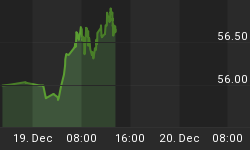Too often, investors only look at the short and medium term trends in the markets. When we have had a year with exceptionally damaging sub-prime problems, it is time to step back and look at 5+ and 15+ year views. It is only the longer term views that can give you a clear picture of how much damage has been done.
Today, we will look at 6 and 16 year views of the Banking Index ... symbol: BKX.
Let's start with 6 year view of the Banking Index. The Banking Sector did remarkably well from July 2002 to February of 2007. Looking at the chart, you can see that it had a steady up trend during that time which produced a 100.73% move to the upside.
But, that ended in March of 2007 when the Banking Index had hit its peak. Five months later, the Index broke its 5 year support to the downside. And now, 11 months after the peak, the Banking Index has given up over two thirds of a rise that was 5 years in the making.
Clearly, a lot of damaged occurred in the past year. See the next chart ...

To get the long term assessment of how much damage was done, we turn to a 16 year Point & Figure chart on the Banking Index. This chart measures the price action as of 11 AM this morning.
The chart shows that we have had a clear support line for the Banking Index going back to 1994. Unfortunately, the recent Banking down trend took the Point & Figure chart below its 16 year support level.
This infraction suggests that the financial problems ahead of us could be way beyond anyone's expectations, and could usher in a long term bear market for the financials that would be destructive to other parts of our economy. See the next chart ...

Next, I created a SemiLog chart of the Monthly Banking Index prices. This confirms that a 13 year support line for the Banking Index was clearly broken to the downside in the past 4 months. The next important support level now sits around the 66 to 68 level.
For the Federal Reserve, this poses a serious problem, and one that could be beyond their ability to repair things as they typically act too late with too little medicine. The odds of a recession have now risen above 50%, and this data could point to a real problematic recession that goes deeper than current expectations.
















